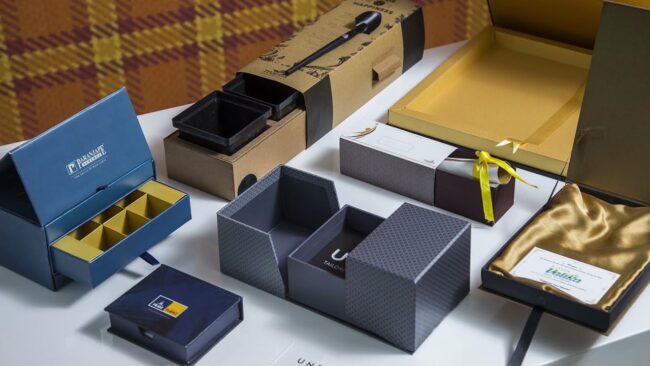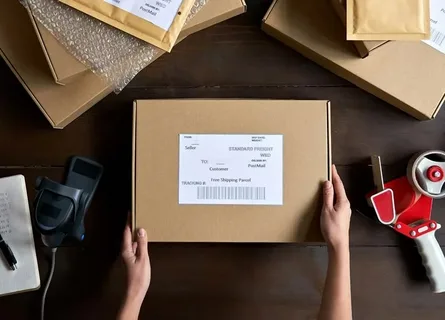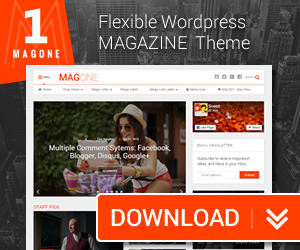In today’s fast-paced retail environment, boxed packaged goods play a crucial role in delivering products safely and attractively to consumers. From
In today’s fast-paced retail environment, boxed packaged goods play a crucial role in delivering products safely and attractively to consumers. From everyday grocery items to luxury electronics, the box packaging not only protects but also markets the product, shaping the consumer’s buying experience. This comprehensive article explores the essential aspects of boxed packaged goods, including their purpose, material types, design principles, industry uses, and emerging trends.
What Are Boxed Packaged Goods?
Boxed packaged goods refer to items that are contained within a box made from materials such as cardboard, corrugated fiberboard, or paperboard. These boxes serve multiple functions — from providing structural protection to acting as a canvas for branding and product information.
Boxed packaging differs from flexible packaging types by offering a rigid or semi-rigid structure, which helps in stacking, handling, and protection during transport and storage.
The Importance of Boxed Packaged Goods
1. Product Protection and Preservation
The most fundamental role of boxed packaging is to protect the product from physical damage, moisture, dust, and contamination. For fragile or sensitive products, boxes often include padding or inserts to minimize movement and breakage.
2. Marketing and Brand Messaging
Boxes offer a large surface area to showcase brand identity through colors, logos, graphics, and messaging. Attractive packaging can influence consumer choice by making the product stand out on crowded retail shelves.
3. Information Conveyance
Boxes carry vital product information — ingredients, usage instructions, safety warnings, certifications, and barcodes — which help consumers make informed decisions and ensure regulatory compliance.
4. Convenience and User Experience
Well-designed boxes improve consumer interaction by being easy to open, reseal, carry, and store. Functional features like handles, tear strips, and windows increase usability and satisfaction.
5. Environmental Impact and Sustainability
With increasing awareness of environmental issues, many brands now adopt eco-friendly packaging materials and designs that reduce waste and support recycling efforts.
More about: boxed packaged goods
Common Materials Used for Boxed Packaging
Cardboard
A lightweight, easily printable material widely used for packaging food, cosmetics, and pharmaceuticals. Cardboard is recyclable and cost-effective.
Corrugated Fiberboard
Known for its strength and cushioning ability, corrugated fiberboard consists of a fluted inner layer between two flat liners. It’s ideal for shipping heavy or fragile products.
Paperboard
A thin, solid sheet used for lighter items like frozen foods and confectionery. Paperboard boxes are easy to fold and print on.
Plastic-Coated Boxes
Some boxes include a thin plastic layer to improve moisture resistance and durability, often seen in food packaging.
Design Principles of Boxed Packaged Goods
Structural Integrity
Boxes must be engineered to protect the contents against shocks and pressure. Custom inserts, partitions, or cushioning materials are used for extra protection.
Aesthetic Appeal and Branding
Color schemes, typography, imagery, and finishes such as gloss, matte, or embossing help convey brand identity and attract consumers.
Functional Features
User-friendly design elements like resealable flaps, tear strips, carry handles, and transparent windows enhance convenience and product visibility.
Regulatory Compliance
Packaging must include all legally required information, such as nutrition facts, warnings, batch numbers, and expiry dates, depending on the product category.

Industry Applications of Boxed Packaged Goods
Food and Beverage
Boxes preserve freshness, protect delicate items, and provide nutrition and ingredient information.
Electronics
Sturdy boxes with foam or molded inserts protect electronic devices from damage during shipping and handling.
Pharmaceuticals and Healthcare
Packaging ensures hygiene, tamper evidence, and clear instructions for medication use.
Cosmetics and Personal Care
Luxury packaging with elegant finishes adds perceived value and protects sensitive products.
Toys and Games
Vibrant, informative packaging appeals to children and parents, while ensuring safety information is clearly displayed.
Emerging Trends in Boxed Packaging
Sustainability
Eco-conscious consumers are driving brands to use recycled materials, reduce packaging size, and create biodegradable options.
Smart Packaging
Incorporating QR codes, NFC chips, or augmented reality features enhances customer engagement and provides detailed product info.
Minimalism and Transparency
Simplified designs with clear messaging build trust and emphasize product quality.
Personalization
Customized packaging, limited editions, and interactive elements foster deeper consumer connections.
Benefits of Boxed Packaged Goods
- Product Protection: Ensures items reach consumers intact.
- Enhanced Branding: Differentiates products and builds loyalty.
- User Convenience: Improves handling and storage.
- Regulatory Compliance: Meets legal requirements.
- Environmental Sustainability: Promotes responsible consumption.
Challenges in Boxed Packaging
- Cost Constraints: Premium or custom packaging can be expensive.
- Waste Management: Packaging contributes to landfill if not recycled.
- Supply Chain Complexity: Material availability and regulatory demands vary globally.
- Design Balance: Achieving both aesthetic appeal and sustainability requires innovation.
Conclusion
Boxed packaged goods are far more than simple containers. They protect products, tell brand stories, provide essential information, and improve consumer experience. As consumer expectations evolve, particularly around sustainability and technology, boxed packaging continues to innovate. Companies investing in smart, eco-friendly, and attractive packaging solutions will be better positioned to succeed in competitive markets.
FAQs About Boxed Packaged Goods
Q1: What are boxed packaged goods?
Products contained within boxes made from paper-based materials like cardboard or corrugated fiberboard for protection and presentation.
Q2: Why is boxed packaging important?
It protects products, promotes brands, conveys information, and enhances convenience.
Q3: Are boxed packages recyclable?
Most cardboard and paperboard boxes are recyclable, although plastic coatings may affect this.
Q4: Can boxed packaging be customized?
Yes, packaging can be customized by size, shape, design, and functional features.
Q5: What materials are commonly used?
Cardboard, corrugated fiberboard, paperboard, and plastic-coated paper.
Q6: How does boxed packaging benefit consumers?
It ensures product safety, provides clear information, and improves usability.
Q7: What sustainability trends influence boxed packaging?
Use of recycled materials, compostability, minimal packaging, and eco-friendly inks.
Q8: Which industries rely on boxed packaged goods?
Food, electronics, pharmaceuticals, cosmetics, toys, and many others.
Q9: What challenges do manufacturers face?
Balancing cost, environmental impact, consumer preferences, and regulatory requirements.
Q10: How is technology integrated into packaging?
Through QR codes, NFC, augmented reality, and smart labels that engage consumers.
More info: onlinemrkting




COMMENTS